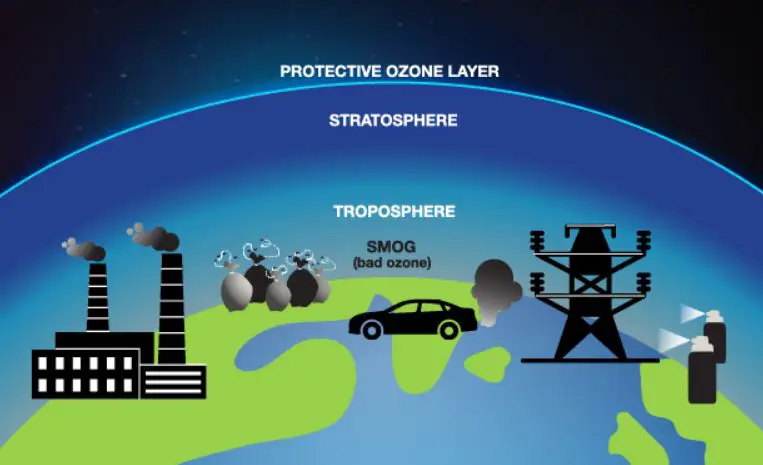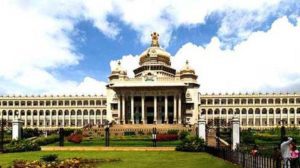Table of Contents
India Cooling Action Plan (ICAP) | 20 Year Road Map |Ozone Layer| UPSC
Montreal Protocol is a global agreement to protect the ozone layer, by weaning out the production and consumption of ozone-depleting substances, and is similar to the Paris Agreement. The Montreal Protocol is quite the success story, and is the only environmental treaty to have been ratified by 197 UN member countries. It has been successful in reducing global production, consumption and emission of ozone layer-depleting substances
- Ministry for Environment, Forest and Climate Change released the India Cooling Action Plan – a 20 year road map (From 2018 to 2038).
About Cooling Action Plan | UPSC – IAS
- India is the first country in the world to develop such a document (ICAP), which addresses cooling requirement across sectors and lists out actions which can help reduce the cooling demand. This will help in reducing both direct and indirect emissions.
- The Montreal Protocol on Substances that Deplete the Ozone Layer (a protocol to the Vienna Convention for the Protection of the Ozone Layer) is an international treaty designed to protect the ozone layer by phasing out the production of numerous substances that are responsible for ozone depletion. As per the Montreal Protocol, India is taking steps to curb elements that deplete the ozone layer.
- India is one of the first countries in the world to develop a comprehensive Cooling Action Plan – to fight ozone layer depletion adhering to the Montreal Protocol.
Main targets of India Cooling Action Plan (ICAP)
- Reduce cooling demand across sectors by 20% to 25% by 2037-38.
- Reduce refrigerant demand by 25% to 30% by 2037-38,
- Reduce cooling energy requirements by 25% to 40% by 2037-38,
- Recognize “cooling and related areas” as a thrust area of research under national S&T Programme,
- Training and certification of 100,000 servicing sector technicians by 2022-23, synergizing with Skill India Mission
ICAP provides an integrated vision:
- To address the cooling requirement across different sectors of the economy such as residential and commercial buildings, cold-chain, refrigeration, transport and industries.
- To lists out actions which can help reduce the cooling demand, enhancing energy efficiency and better technology options.
Significance of India Cooling Action Plan (ICAP) | UPSC – IAS
- Thermal comfort for all – Provision for cooling for Economically Weaker Sections and Low Income Group housing.
- Sustainable cooling – Reducing both direct and indirect Greenhouse Gases emissions related to cooling.
- Doubling Farmers Income – Through better cold chain infrastructure–less wastage of produce leading to better value of produce to farmers.
- Skilled workforce by creating jobs in service sector. For example- Skilling of AC and refrigerator service technicians.
- Robust R&D on alternative cooling technologies to provide push to innovation in cooling sector.
Key actions included under India Cooling Action Plan (ICAP) | UPSC – IAS
- Cooling buildings naturally through better design: Passively cooled building designs with natural and mechanical ventilation.
- Adopting comfortable range of thermostat set-points in commercial buildings as well as for affordable housing projects under the Pradhan Mantri Awas Yojana for economically weaker sections.
- Improving efficiency of cooling appliances: The plan makes ACs a focus area as the majority of energy consumption in space cooling is by room air-conditioners. A drive for widespread adoption of 5-star labelled fans and room air conditioners in new and existing public buildings.
- Reducing cost of efficient air-conditioning through public procurement schemes.
- Skilling and certifying AC and refrigerator service technicians.
- Promoting renewable energy-based energy efficient cold chains
- Investing in research and development (R&D) of refrigerant gases that do not harm or warm the planet.
Why India needs ICAP ? | UPSC – IAS
- Cooling is an important developmental necessity as it is needed in different sectors of the economy. For example: Space cooling for buildings consumes 60% of the total energy supply for cooling in India.
- India’s per capita space cooling consumption is nearly 1/4th of global average consumption. (Global average-272 kWh whereas India’s 69 kWh).
- However, according to recent report, the current technology used in conventional cooling systems in air conditioners and refrigerators, coupled with an increasing demand for such appliances and rising global temperatures, could spur a 64 % increase in household energy use and produce over 23 million tonnes of carbon emissions by 2040.
- This presents an urgent need (for India and other tropical countries) to develop a sustainable plan addressing both concerns.




